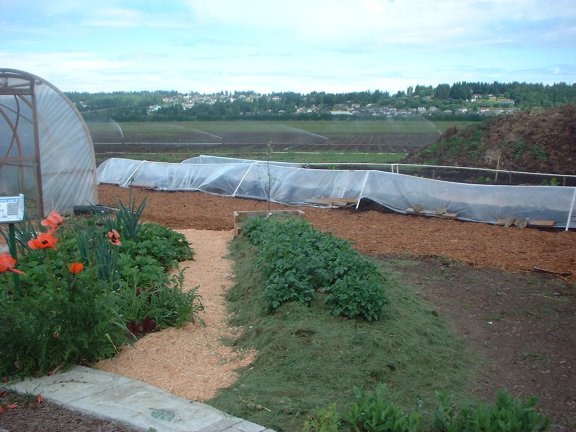In this tutorial, we will cover the topic of sustainability and solutions. We will define sustainability and explore its relationship with the harvesting of natural resources, such as soil, water, and fossil fuels. We will also discuss measures that can be taken to protect the environment and manage human population growth. Specifically, this lesson will cover the following:
1. What is Sustainability?
Sustainability is when human activities integrate with natural ecosystems in such a way that the activities can be performed indefinitely without harming the environment.
Sustainability can be understood under three main categories of human interactions with the environment:
- Harvesting natural resources
- Protecting the environment
- Managing human population growth
-
It is human interactions with the environment in these three regards that are viewed when we consider whether something is sustainable.
2. Harvesting Natural Resources
As an integral part of environmental protection, it is important to discuss sustainability in relation to harvesting natural resources. We seek to harvest and use natural resources at a rate that is equal to their regeneration rate, meaning we only want to use as much as can be produced at that time.
Natural resources can include renewable resources, such as soil, water, forests, as well as animal and plant species. It can also include nonrenewable resources such as fossil fuels.
-
EXAMPLE
Oil and gas are nonrenewable resources.
The following sections summarize the sustainability efforts to address the use of soil, water, and fossil fuels.
2a. Soil
Sustainability efforts to address soil resources for food production are the following:
- Crop rotation
- Implementation of erosion-control strategies
- Planting trees to stabilize the ground to hold soil in place
- Providing financial incentives, like tax credits and subsidies, for sustainable farming practices

2b. Water
Sustainability efforts to address human water consumption are the following:
- Rainwater harvesting
- Developing of new storage techniques
- Implementation of water conservation
- Water reuse
- Saltwater desalination
- Developing efficient methods of irrigation
- Improving access to safe drinking water

2c. Fossil Fuels
Sustainability efforts to address fossil fuel consumption include the following:
- Improving the efficiency of energy transmission facilities, as well as the efficiency of distribution lines
- Reducing the overall fossil fuel consumption and scaling up renewable energy sources
- Improving the energy efficiency in industry, household products, and automobiles

3. Protecting the Environment
Sustainable practices seek to allow an ecosystem to continue to provide the valuable services that it does naturally. Protecting the environment can also pertain to sustainable ecological efforts by promoting native species and reducing non-native species of plants and animals, protecting and improving water quality, and limiting urban sprawl to reduce the amount of expansion of urban areas onto undeveloped land or agricultural land.
The following sections summarize the sustainability efforts to address the most crucial environmental issues: climate change and pollution.
3a. Climate Change
Efforts to protect the environment, particularly in relation to climate change with sustainability in mind, include the following:
- Adjusting crop varieties and planting dates in response to climate change
- Designing buildings and roadways with climate change impacts in mind
- Setting aside geographic buffer zones where development cannot occur, to prepare for sea level rise and flooding
- International cooperation to address climate change as a global issue
3b. Pollution
Sustainability efforts to protect the environment from pollution include the following:
- Planting crops in areas where they can easily grow without pesticides or fertilizers
- Implementing erosion-control techniques to prevent runoffs from the erosion into waterways
- Rolling out financial incentives for sustainable practices through measures such as tax incentives and subsidies
- Monitoring and controlling disease-related pollutants

Sustainability efforts to reduce the negative environmental impacts from pollution include the following:
- Reducing ecological footprint by increasing mass transit options
- Researching and developing new energy storage and creation technologies
- Utilizing localized energy sources in a distributed energy grid rather than a centralized one
-
A distributed grid minimizes efficiency losses from transporting energy.
4. Managing Human Population Growth
Finally, because population growth exacerbates most environmental problems, it is an important sustainability issue. Efforts that can address human population growth, through the lens of sustainability, include the following:
- Creating new land use policies that limit certain types of development with the goal of limiting urban sprawl
- Planning municipalities to consider carrying capacity
- Implementing measures through policy to limit the number of children families can have
In this lesson, we learned about sustainability and its solutions. We learned about the relationship between sustainability and harvesting natural resources such as soil, water, and fossil fuels. We also learned about actions that can be taken to protect the environment from problems such as climate change and pollution, including managing human population growth.



